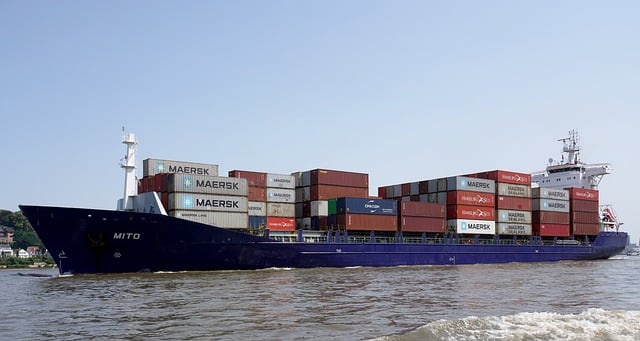Introduction:
In times of crisis, the rapid delivery of emergency aid is crucial to saving lives and alleviating suffering in disaster-affected areas. However, behind every successful relief operation lies a complex web of logistical challenges that must be overcome. In this article, we’ll delve into the intricacies of delivering emergency aid to disaster-affected areas, exploring the logistics involved, the challenges faced, and the innovative solutions that enable relief organizations to respond effectively to emergencies.

Understanding the Logistics of Emergency Aid Delivery:
Emergency aid delivery involves the transportation, distribution, and coordination of relief supplies to disaster-affected areas in a timely and efficient manner. This process encompasses a range of logistical considerations, including:
- Rapid Needs Assessment: Before aid can be delivered, relief organizations must conduct rapid needs assessments to determine the most pressing needs of affected communities. This involves gathering information on the scale and scope of the disaster, the number of affected people, and the specific needs for food, water, shelter, medical assistance, and other essential supplies.
- Transportation: One of the key logistical challenges in emergency aid delivery is transportation. Relief supplies must be transported from warehouses or distribution centers to disaster-affected areas, often over long distances and in challenging terrain. This may involve the use of various modes of transportation, including trucks, airplanes, helicopters, boats, and even donkeys or mules in remote areas.
- Warehousing and Storage: Once relief supplies reach their destination, they need to be stored safely and securely until they can be distributed to affected communities. This requires the establishment of temporary warehouses or storage facilities in disaster-affected areas, equipped with adequate security measures to protect the supplies from theft, damage, or spoilage.
- Distribution: Distribution is the process of delivering relief supplies directly to affected communities, often through distribution centers or points of distribution (PODs). This may involve setting up mobile distribution sites, conducting door-to-door deliveries, or coordinating with local authorities and community leaders to ensure equitable access to aid.
- Coordination and Communication: Effective coordination and communication are essential for ensuring the smooth delivery of emergency aid. Relief organizations must work closely with government agencies, local authorities, humanitarian partners, and community-based organizations to coordinate response efforts, share information, and avoid duplication of efforts.
Challenges Faced in Emergency Aid Delivery:
While emergency aid delivery is essential, it is not without its challenges. Some of the common challenges faced by relief organizations include:
- Access Constraints: In some cases, disaster-affected areas may be difficult to access due to damaged infrastructure, impassable roads, or security concerns. This can hinder the delivery of aid and delay response efforts, particularly in remote or conflict-affected areas.
- Limited Resources: Relief organizations often face resource constraints, including limited funding, staffing shortages, and inadequate supplies. This can affect their ability to scale up operations and respond effectively to large-scale emergencies.
- Coordination Challenges: Coordinating relief efforts among multiple organizations and agencies can be challenging, particularly in complex emergencies involving multiple actors and stakeholders. Lack of coordination can lead to inefficiencies, overlap, and gaps in assistance.
- Cultural and Linguistic Barriers: Relief organizations must navigate cultural and linguistic barriers when delivering aid to diverse communities. Understanding local customs, traditions, and languages is essential for building trust and ensuring the cultural appropriateness of aid delivery.
- Security Risks: Humanitarian workers often face security risks when operating in conflict-affected or volatile environments. Security threats, including violence, looting, and attacks on aid convoys, can jeopardize the safety of relief personnel and hinder aid delivery.
Innovative Solutions in Emergency Aid Delivery:
Despite these challenges, relief organizations are continually innovating to improve the efficiency and effectiveness of emergency aid delivery. Some innovative solutions include:
- Pre-positioning of Supplies: Pre-positioning relief supplies in strategic locations before a disaster strikes can help expedite response efforts and reduce delivery times. This involves stockpiling essential items such as food, water, shelter materials, and medical supplies in warehouses or distribution centers located near disaster-prone areas.
- Use of Technology: Technology plays a crucial role in enhancing the logistics of emergency aid delivery. Tools such as geographic information systems (GIS), satellite imagery, and mobile applications can help relief organizations map disaster-affected areas, track supply chains, and coordinate response efforts in real-time.
- Cash-Based Assistance: In some cases, providing cash-based assistance to disaster-affected populations can be more effective than traditional in-kind aid. Cash transfers enable affected individuals and families to purchase the items they need most urgently, while also stimulating local economies and supporting recovery efforts.
- Partnership and Collaboration: Collaboration between relief organizations, government agencies, private sector partners, and local communities is essential for addressing the complex logistical challenges of emergency aid delivery. By pooling resources, sharing expertise, and coordinating efforts, partners can maximize the impact of their response efforts and reach more people in need.
Conclusion:
Delivering emergency aid to disaster-affected areas requires careful planning, coordination, and innovation. From conducting rapid needs assessments to navigating access constraints and coordinating response efforts, relief organizations face numerous logistical challenges in their quest to provide timely



